Last Reviewed and Updated on August 8, 2022
The word “fox” can refer to a large number of creatures, some of which are entirely different species, some not even closely related to true foxes. They have been around for a long time, and many distinct species can be found all over the globe. Learn more about the different types of foxes – the twelve true foxes, the three non-true foxes, and seven false foxes.

True Foxes (genus Vulpes)
The genus Vulpes are foxes that are known as true foxes. There are currently 12 living species in this genus.
You may also like: interesting facts about foxes
1. Red Fox (Vulpes vulpes)

Red foxes are the most common of all types of foxes. You can come across one in most of North America, Europe, Asia, and North Africa, where they are native species. They were introduced in Australia as well, where it is an invasive species.
It is the largest of all fox species. It has an elongated body, short limbs, and a very long, fluffy tail.
While the name suggests these foxes are red, there are actually three main color morphs; red, silver/black, and cross. With more than 40 subspecies of red foxes, there is quite a bit of color variation.
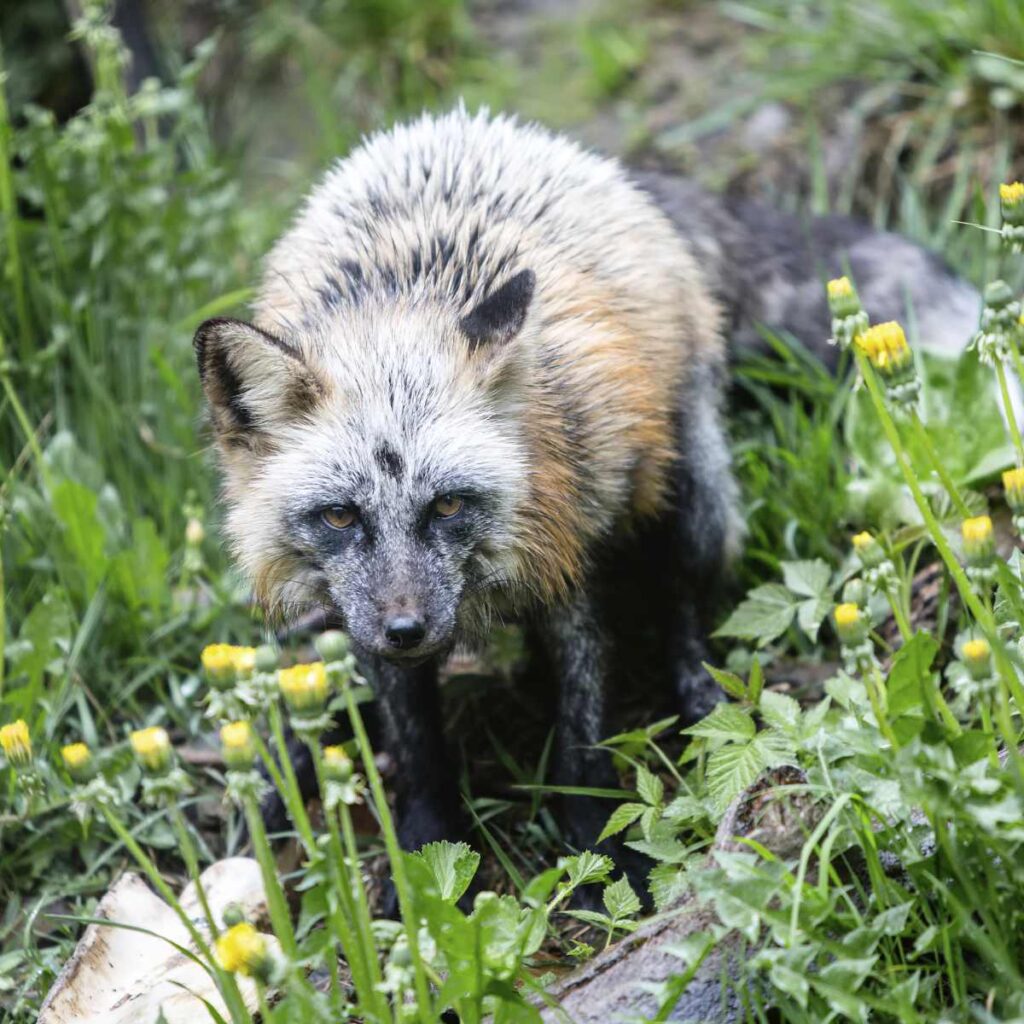
2. Fennec Fox (Vulpes zerda)

The Fennec fox is the smallest member of the true foxes. They are distinguished by their large ears, which help them hear their prey underground and to dissipate the heat.
They live in North Africa and the Sahara Desert. Fennec foxes are crepuscular, meaning they are most active at twilight. During the day, they rest in burrows to escape the heat.
Their fur is adapted for the heat as well; fennec foxes have sand-colored, which reflects sunlight during the day and keeps them warm at night.
3. Cape Fox (Vulpes chama)
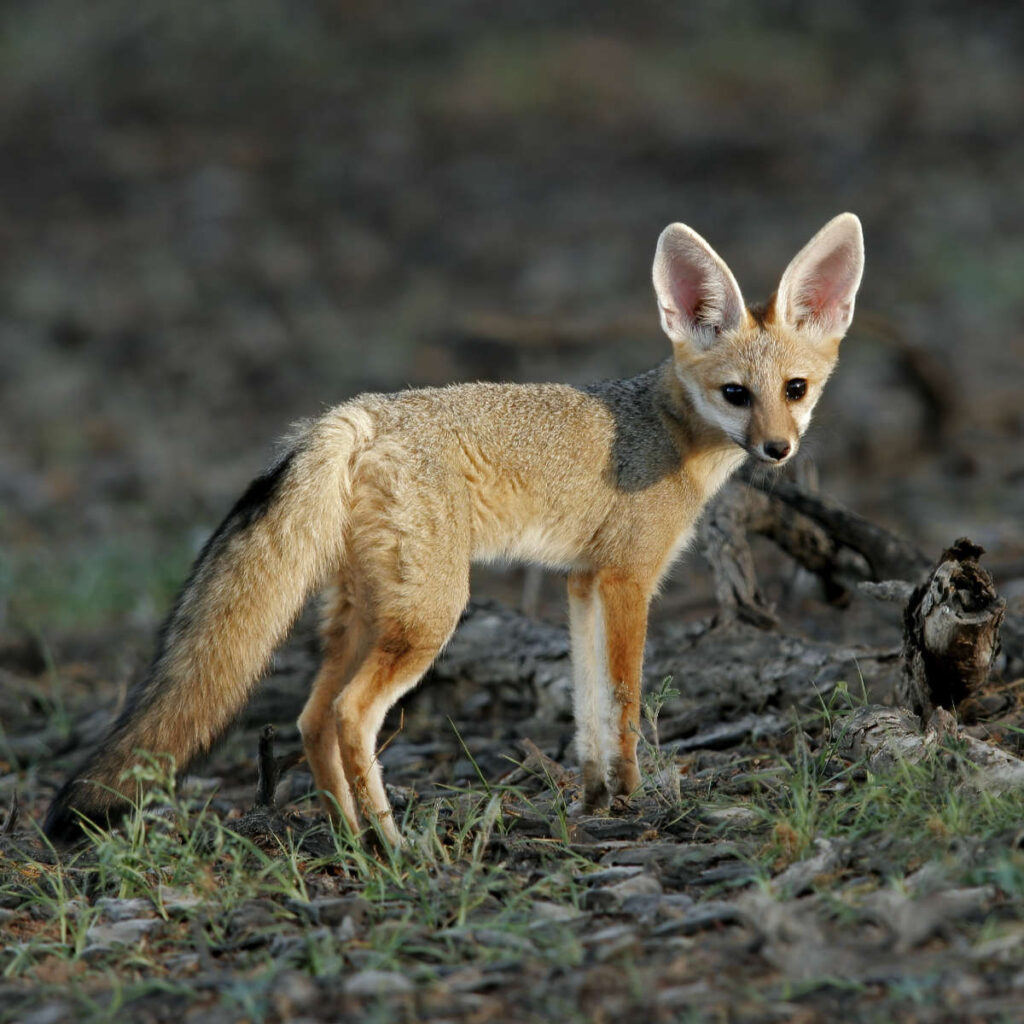
Cape foxes are also commonly called the asse, cama fox, or silver-backed fox. They can be found in South Africa, and they are the only true fox species occurring in sub-Saharan Africa.
These foxes are relatively small with long fluffy tails. Similar to the fennec fox, these foxes have relatively large ears and a small and pointed muzzle. The fur color is mostly silver-gray and light brown to orange-brown.
4. Kit Fox (Vulpes macrotis)

Found in semi-arid and arid regions of the southwestern United States and northern and central Mexico, kit foxes are the smallest species of foxes in those regions, as well as one of the smallest in the world. Like fennec foxes, these foxes have larger ears as well. The ears help them dissipate heat and make them better hunters as they have exceptional hearing.
While the fur color does vary geographically, it is commonly grizzled or yellowish gray. These foxes have a bushy tail with a black tip.
5. Corsac Fox (Vulpes corsac)
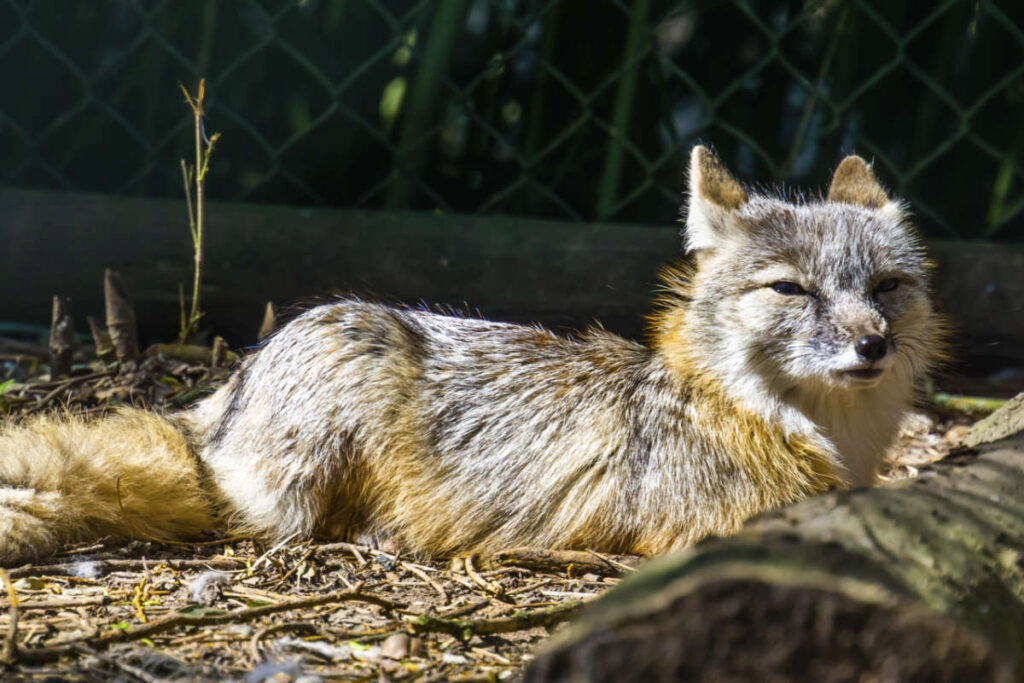
You will find this medium-sized fox in steppes, semi-deserts, and deserts across Central Asia, China, and Mongolia. They are also known as steppe foxes.
The fur of this species is gray to yellowish colored, with paler underparts and mouth, chin, and throat markings. During the winter, the coat becomes more straw-gray in color, with a darker line running along its back.
6. Arctic Fox (Vulpes lagopus)
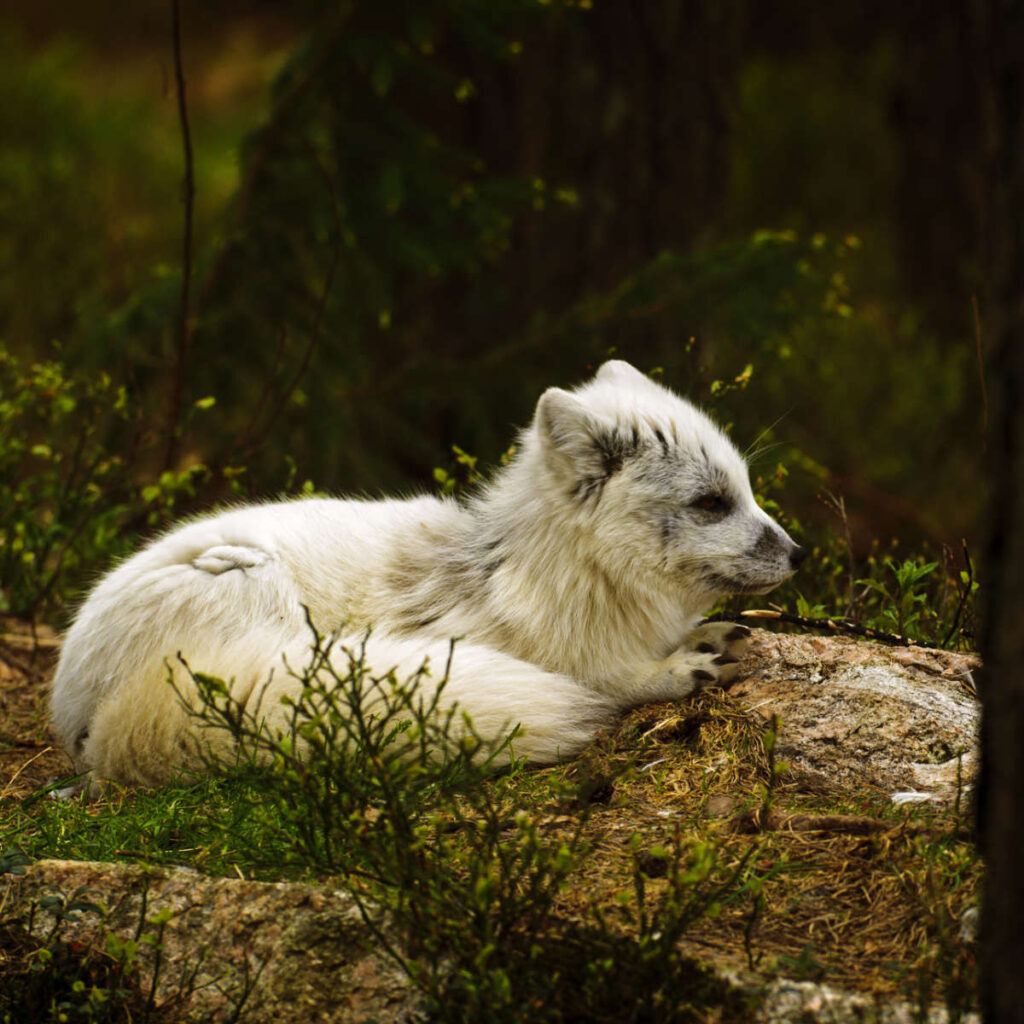
Arctic foxes are also commonly known as white foxes, snow foxes, or polar foxes. They are native to the Arctic regions of the Northern Hemisphere.
These foxes are well adapted for the harsh environment they live in; their fur is thick and war.
They are most known for their snow-white furs, although the completely white fur isn’t seen in all foxes, and in addition to that, the color of their fur changes with seasons. The white arctic foxes are white in winter and brown along the back and light gray around the abdomen in summer. The blue arctic foxes have dark blue, brown, or gray-colored fur year-round.
Fun fact: arctic foxes are the only canid whose foot pads are covered in fur.
7. Bengal fox (Vulpes bengalensis)

Also known as the Indian fox, the Bengal fox can be found in most parts of the Indian subcontinent.
This is a relatively small species of fox. It has an elongated muzzle, long pointed ears, and a long bushy tail. The color of the fur varies from light brownish yellow to silver gray. The tail is black-tipped.
8. Tibetan Sand Fox (Vulpes ferrilata)
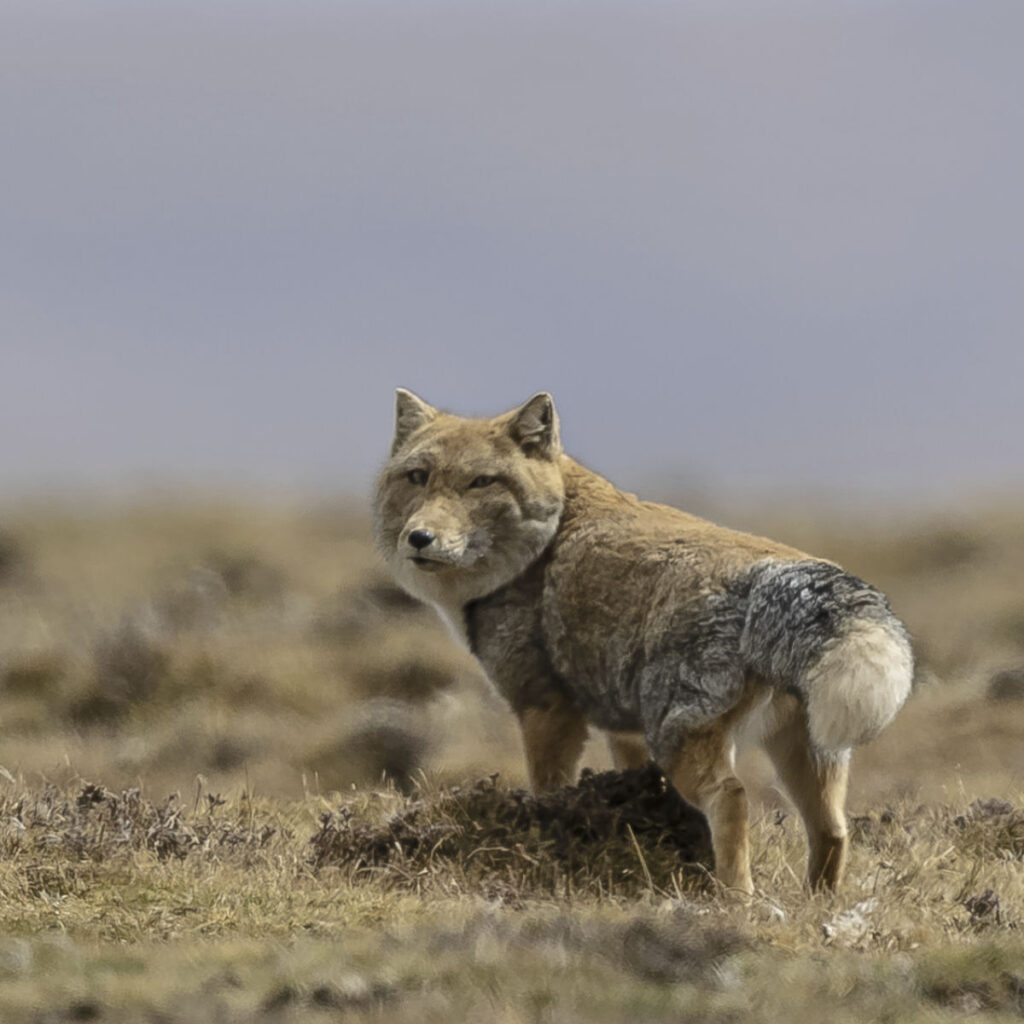
This small and compact fox has soft, dense fur, a narrow muzzle, and a bushy tail. It’s mostly tan or reddish brown colored, with cheeks, flanks, upper legs, and rumps being gray. The tail has a white tip.
These foxes can only be found in the Tibetan Plateau.
9. Swift Fox (Vulpes velox)

Swift foxes are small foxes (about the size of a domestic cat) native to the western grasslands of North America.
Their coat is dark, grayish tan with yellowish tan on the sides and legs. They have a black-tipped tail.
While the species has a stable population now, it was close to extinction in 1930s.
10. Rüppell’s fox (Vulpes rueppellii)

Rüppell’s fox is a small fox that can be found in desert and semi-desert regions of North Africa, the Middle East, and southwestern Asia.
They have a sandy coat with some brown and numerous small patchy white hairs. The coat color fades from more reddish along the middle of the back to almost pure white on the underparts and tip of the tail. As with other types of foxes that primarily dwell in hotter habitats, this fox has larger ears to help it cool off.
It shares its habitat with the fennec fox, and while adults of both species look different, the young Rüppell’s foxes are very similar to adult fennec foxes.
11. Blanford’s fox (Vulpes cana)

You will find this small-sized fox in parts of the Middle East and Central Asia. It’s known by many other common names; Afghan fox, royal fox, dog fox, hoary fox, steppe fox, black fox, king fox, cliff fox or Balochistan fox.
It’s a small fox species with wide ears and a long bushy tail, which is almost the same length as the fox’s body. They are brownish gray with light yellow bellies; in winter, the coat gets a dense black undercoat with white fur speckles in the dorsal area.
These foxes primarily eat insects and fruit.
12. Pale Fox (Vulpes pallida)
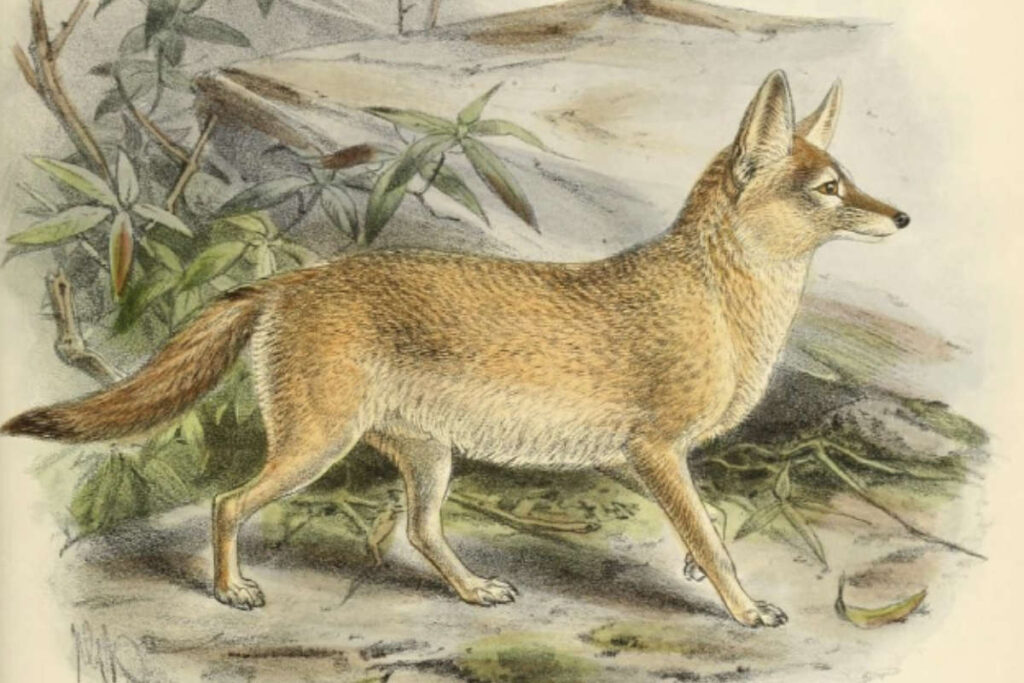
Last on the list of types of true foxes is the pale fox, a species of fox that is the least studied of them all.
Non-true foxes (but still foxes)
Genus Urocyon and Otocyon are two separate genera in the canine family, but they are still considered foxes. They are most closely related to true foxes.
1. Gray Fox (Urocyon cinereoargenteus) – Genus Urocyon
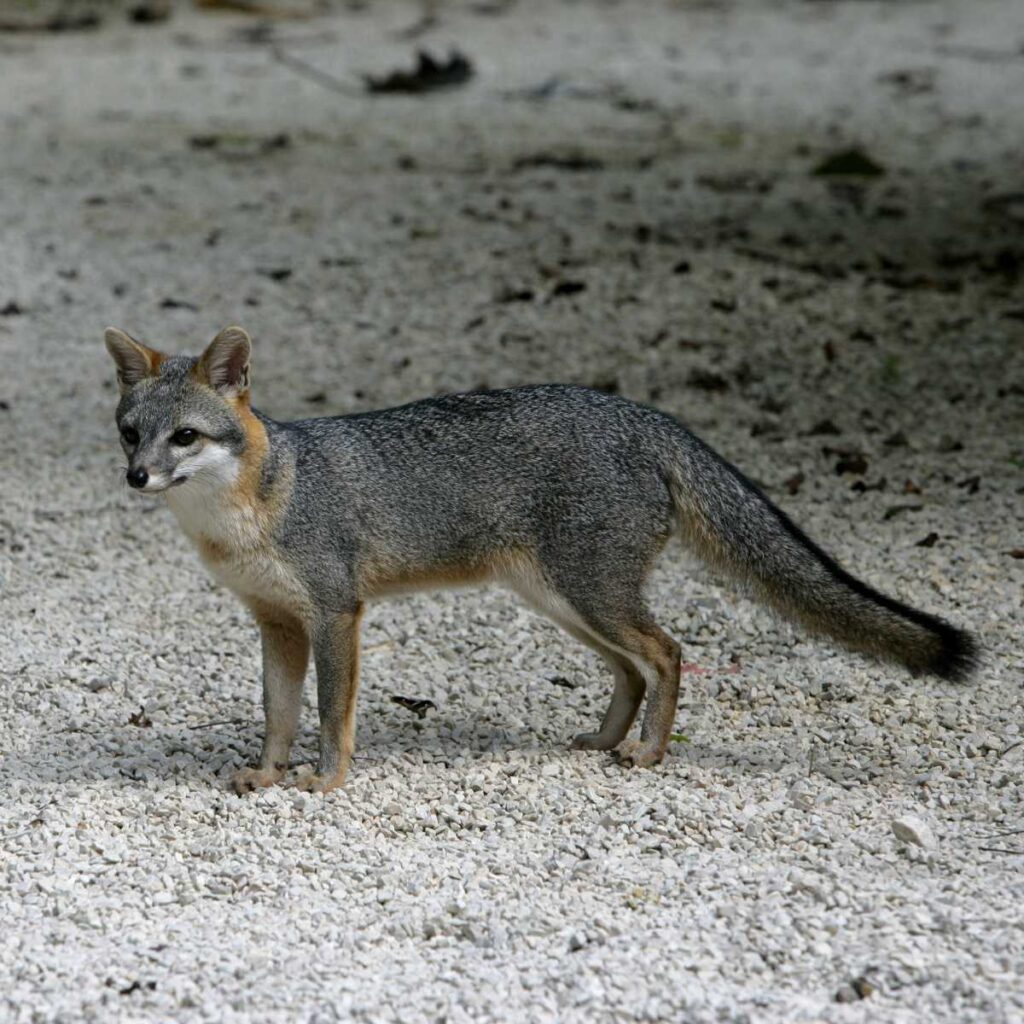
One of the coolest types of foxes is the Gray fox, as these foxes can climb trees. It’s one of the very few species in the canine family that has this ability.
Another thing that makes this species special is it is considered to be genetically basal to all other living canids.
Gray foxes are widespread in North America and Central America.
2. Island Fox – Genus Urocyon

These foxes live on six of the eight Channel Islands of California. Each of the islands is inhabited by one specific subspecies of these foxes, which means each island has its own unique fox.
It’s very closely related to the gray fox but is quite a bit smaller.
3. Bat-eared fox genus Otocyon

These foxes are found in the African savanna. As the name suggests, these foxes have large ears, which play an important role in thermoregulation.
False Foxes
There are quite a few more species of canines that have the common name fox. They may resemble many types of foxes but are more closely related to wolves and jackals than they are to foxes.
Most belong to the genus Lycalopex and are commonly known as South American foxes. To distinguish these from true foxes and non-true foxes, the term zorro is used for this group of animals.
1. Hoary fox (Lycalopex vetulus)
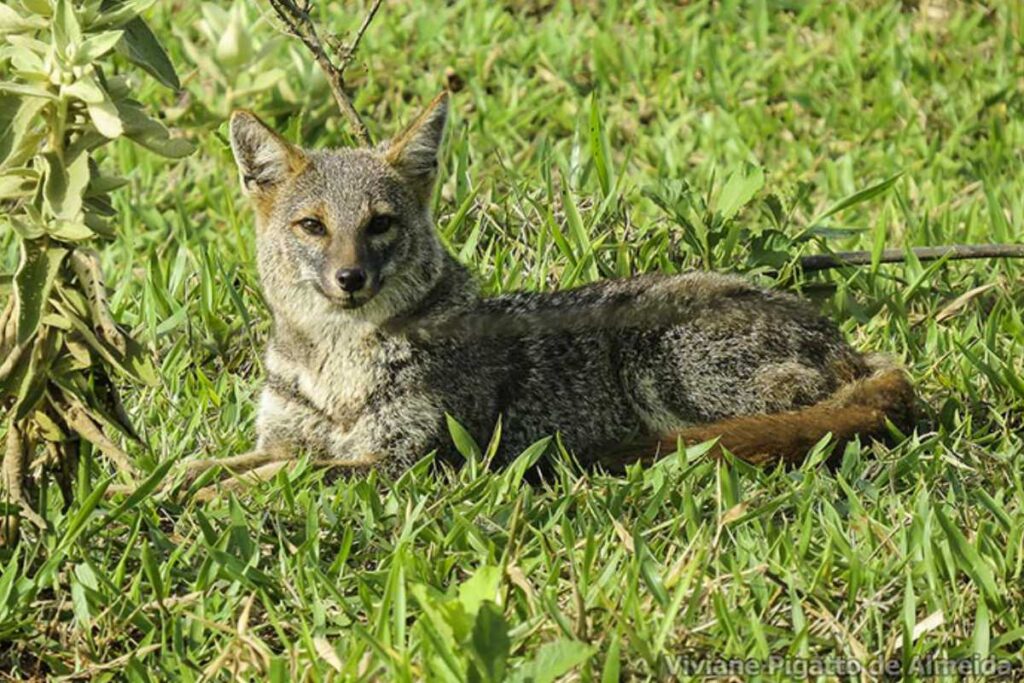
These false foxes are endemic to Brazil. It’s a smaller animal, and it feeds primarily on insects.
2. Sechuran fox (Lycalopex sechurae)

Commonly known as the Peruvian desert fox or Sechuran zorro, this animal can only be found in the Sechura Desert in northwestern Peru.
3. Darwin’s fox (Lycalopex fulvipes)
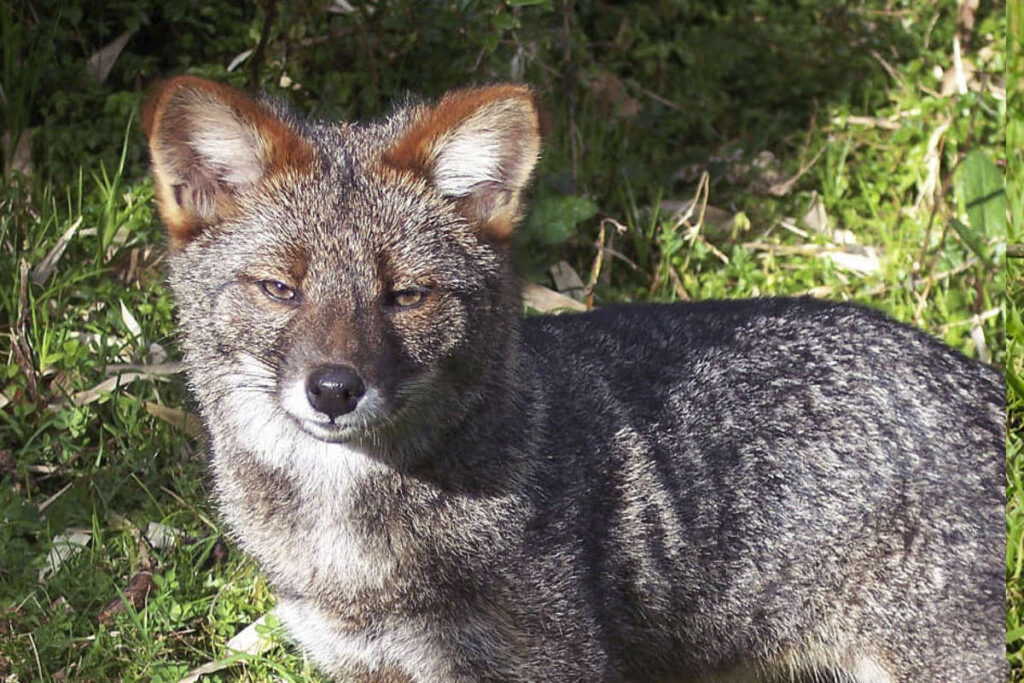
As the name suggests, this species was discovered and first described by Charles Darwin.
You can only find these zorros in Nahuelbuta National Park, the Cordillera de Oncol, Cordillera Pelada in mainland Chile and Chiloé Island.
4. Pampas fox (Lycalopex gymnocercus)
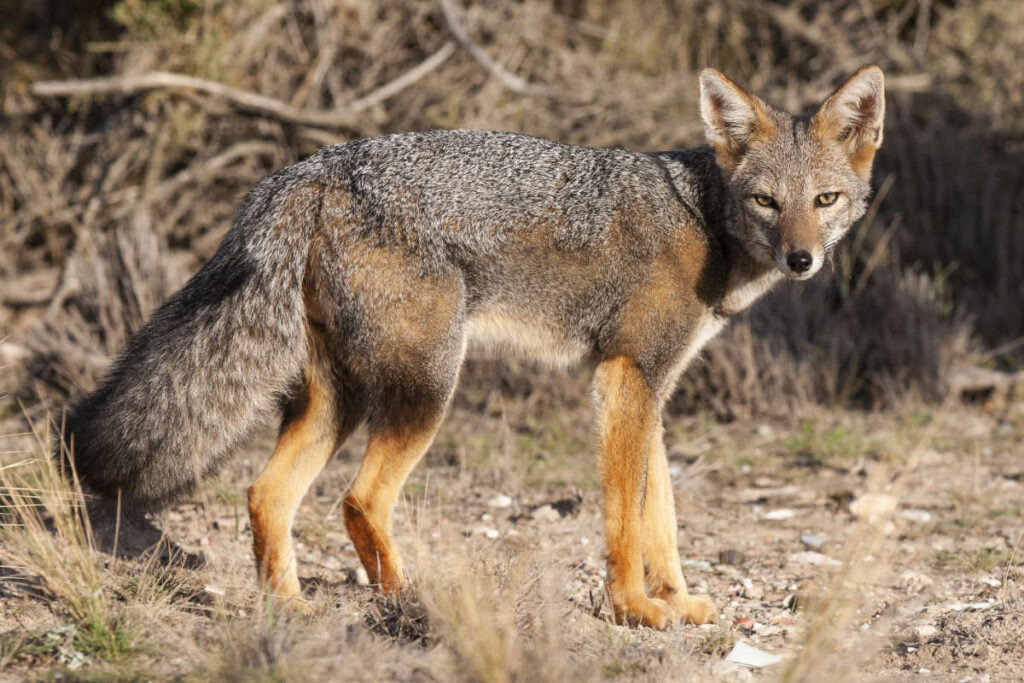
These false foxes are also known as grey Pampean fox, Pampas zorro, Azara’s fox, or Azara’s zorro. They are native to South American Pampas.
5. South American gray fox (Lycalopex griseus)
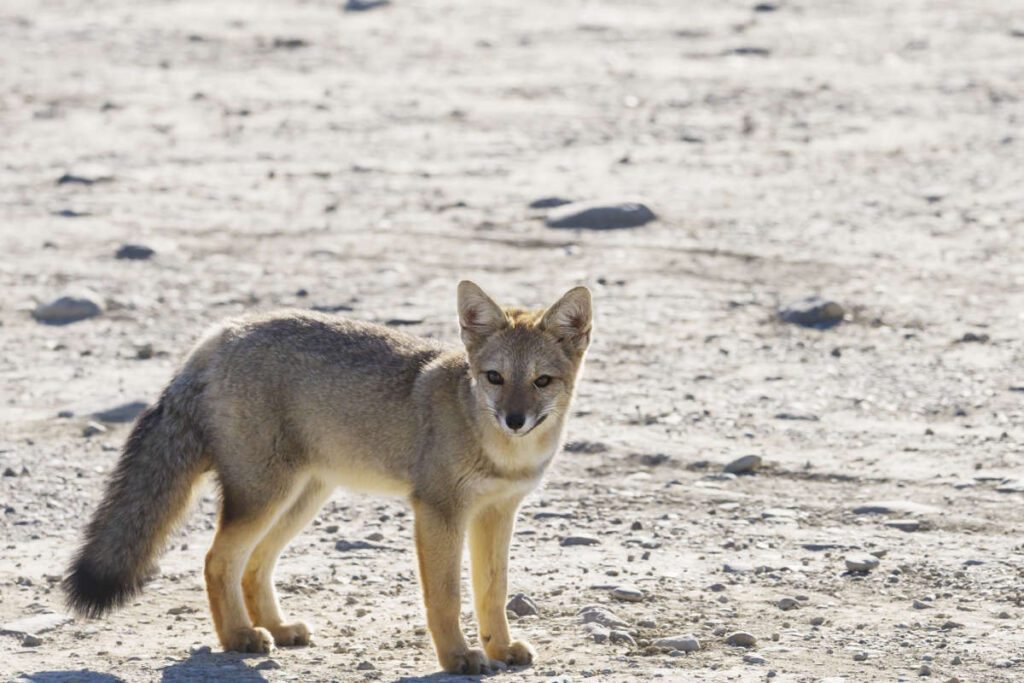
Other common names for this species are Patagonian fox, the chilla, or the gray zorro. This small fox-like canid can be found in the Southern Cone of South America, mostly in Argentina and Chile.
6. Andean fox (Lycalopex culpaeus)

Commonly known as culpeo, zorro culpeo, Andean zorro, Andean fox, Paramo wolf, Andean wolf, and colpeo fox, this animal is the second largest canid in South America.
They can mostly be found from Ecuador and Peru to the southern regions of Patagonia and Tiera del Fuego.
7. Crab Eating Fox (Cerdocyon thous)
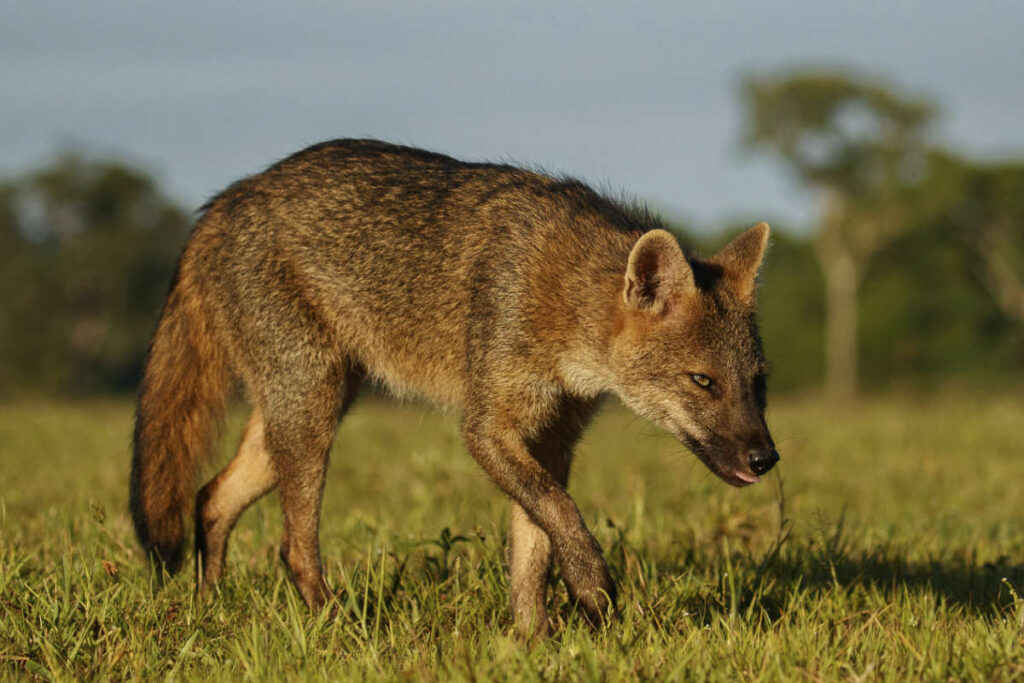
Also known as the forest fox, wood fox, bushdog or maikong you will find these medium-sized canids in the central part of South America.
